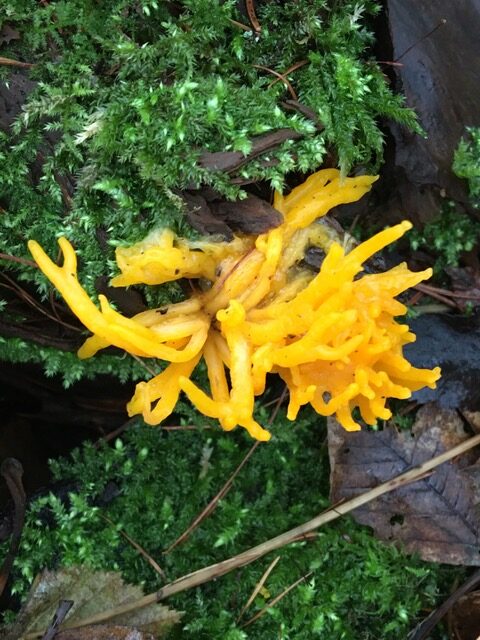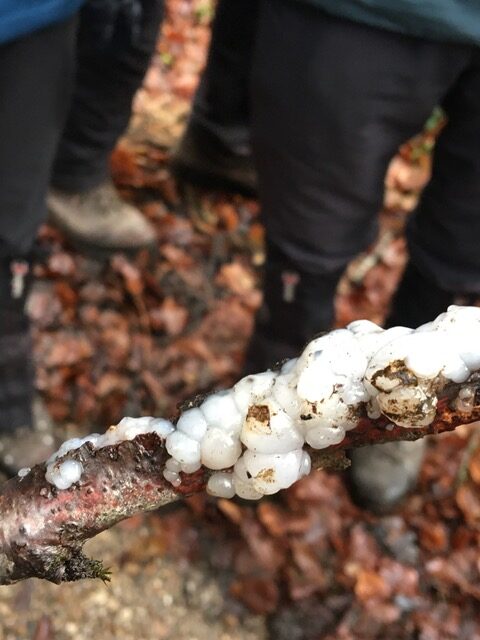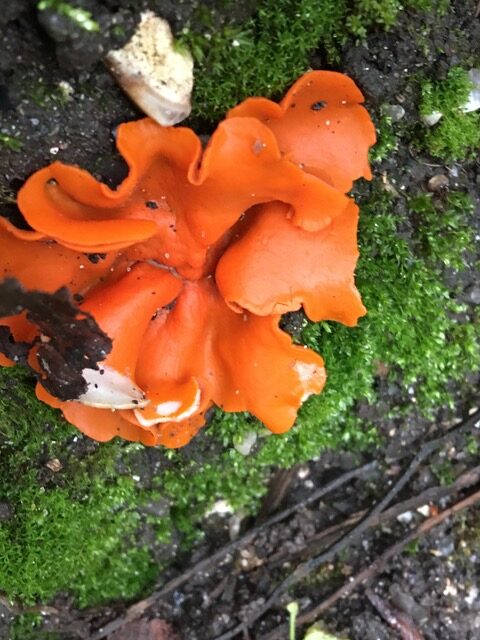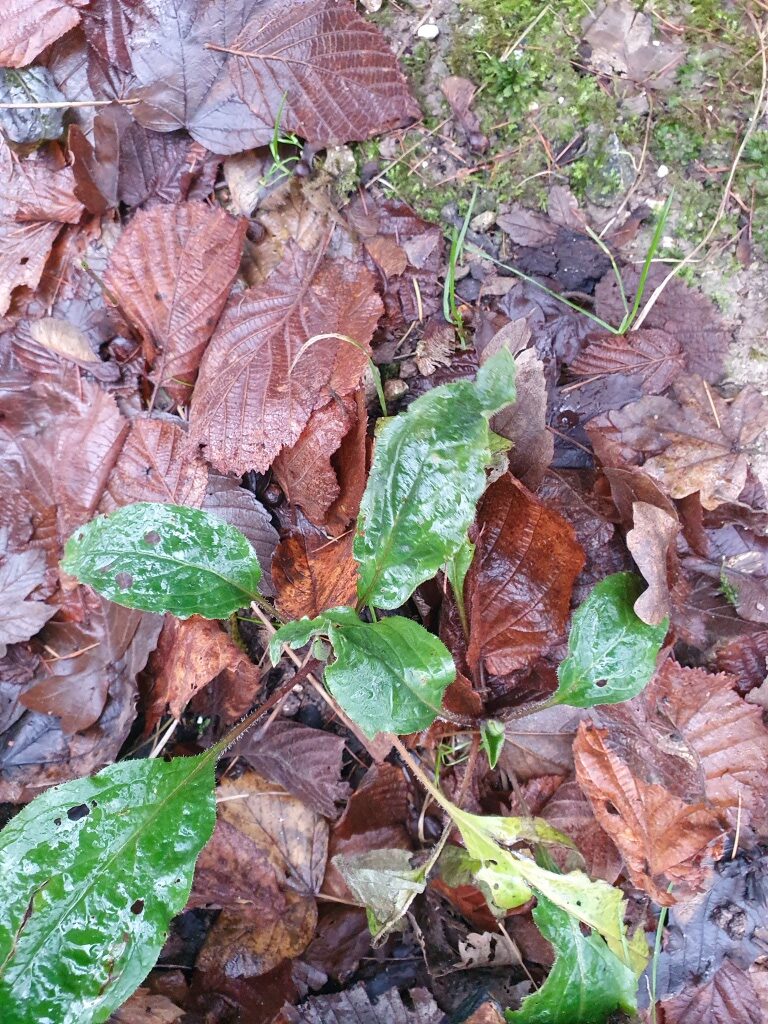On the morning of Wednesday 13 December, Sally Rankin led a circular walk which started from the 5 Horseshoes pub at Maidensgrove. After weeks of rain, frequently heavy, the ground was saturated, although there was only occasional drizzle during the walk. It felt cold, with a strong northerly wind and a temperature of 6C. As members gathered for the walk, a Red Kite called from the top of a conifer next to the pub. Turning right out of the car park, the walk started out along a footpath which led down to the left. Next to the path were enormous old many-stemmed Hazel coppice stools. The path initially sloped gently downhill, with species such as Field Maple, Crab Apple, Wayfaring Tree, Old Man’s Beard and Buckthorn in the hedgerow. Then it sloped down much more steeply as it skirted the edge of Little Cookley Hill, a steep hillside of fine Chalk grassland where a flock of sheep were grazing. The path led through a small area of woodland and on into a grassy pasture field beyond. There was a row of big oaks across the edge of the field. One of the oaks had a Beech tree growing in front of it. The Beech lent towards the oak and appeared to be supporting a big limb of the oak. Continuing up the hill, there was a pit surrounded by trees, which led to a debate as to whether this was a sink hole or a chalk pit. It didn’t appear to have an exit path for extracting material, but nor was there a source of water to trigger a sink hole. A Kestrel flew along the line of trees and several Redwings were seen. The track led to a cluster of houses at Park Corner. A large sarsen stone was resting on the bank at the side of the road.
After a short stretch of road, the next track turned off to the left and ran along the lower edge of an area of woodland which must have been thinned in the last few years. The trimmings had been organised into neat piles, allowing extra light to reach much of the woodland floor. Here there was a massive growth of Foxglove leaves. This section of the woods will look superb in early summer next year when the Foxgloves are in flower. The leaves of Bush Vetch and Wood Speedwell were amongst the sightings on the bank beside the track. Common Figwort had a mix of green and black berries. Fungi seen included a probable White Brain Exidia thuretiana on a fallen branch, plus specimens of Yellow Stagshorn Calocera viscosa and Candlesnuff Fungus Xylaria hypoxylon. The track emerged from the woods and continued down the valley. Glowing in the wet mud of the bank beside the path were a number of patches of Orange Peel Fungus Aleuria aurantia. The section of track beyond Westwood Manor Farm was the most difficult part of the morning’s walk. The rain which had fallen since the route was originally prospected meant that a muddy stretch had transformed to more than ankle-deep water and mud. Fortunately everyone managed to get through without mishap. The track led to a junction of five paths. Continuing almost straight on, the next path led up across a grassy pasture. At the bottom of the field, moles had turned up dark, stone-free earth. The path climbed steeply up across the field. The walkers were encouraged to take the climb slowly, pausing to look behind at the splendid view of steep valleys and parcels of woodland. Plants seen included Carline Thistle and Salad Burnet. The path continued steeply up, crossing a strip of woodland where steps had been added to aid the walkers. Two Ravens called and there was a small flock of Linnets. The path led through a gateway into woodland, the top section of Big Ashes Plantation in BBOWT’s Warburg reserve. Sally pointed out the bright green leaf rosettes of Green Hound’s-tongue. This was doing particularly well in this part of the wood and there were many plants of it. Spurge-laurel was also noted here. The path joined a track which ran northwards out of the reserve and up to Russell’s Water Common. The final section of the walk crossed the Common and led back to the Five Horseshoes. The Common was exposed to the northerly wind, which made the warm fires of the pub particularly welcoming.




Pictures by Inge Beck and Jan Haseler
